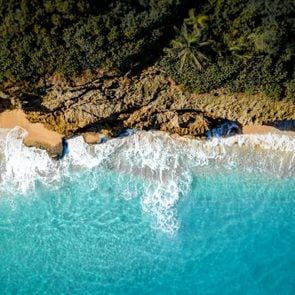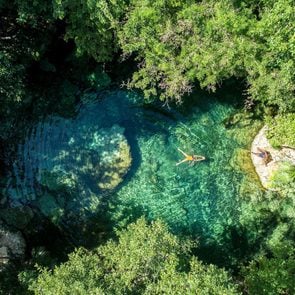I Use a Wheelchair, and My Trip to the Galápagos Islands Was a Dream for Accessible Travel
Updated: Jan. 17, 2024
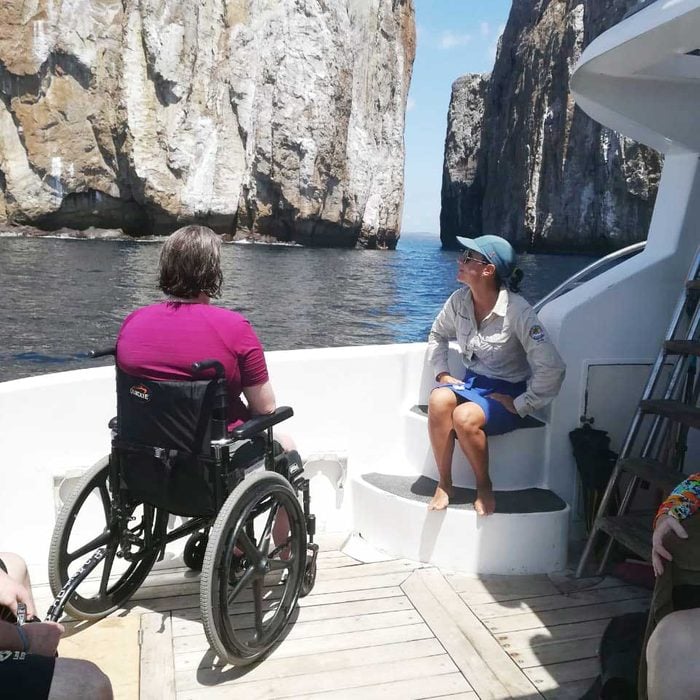
I never imagined a vacation in the Galápagos Islands would be possible for a wheelchair user like me. Thanks to an accessible tour company, I finally took the trip of a lifetime.
From cacti and mangrove trees to gigantic tortoises and the remarkable blue-footed booby, some of the most diverse flora and fauna on planet Earth call the Galápagos Islands home. Best known as the place that inspired Charles Darwin’s theory of evolution, the island group has captivated me since I was young. But I never thought the Galápagos Islands would be accessible to a disabled traveler like me.
Ninety-five percent of the land area within the Galápagos Islands is classified as protected as a part of the Galápagos National Park Directorate. Getting around a place renowned for its natural beauty and untouched terrain in a wheelchair sounded challenging. That’s why I was so excited when I came across Latin America for All online. The sustainable and accessible tour company offers trips to Latin and South America for people with disabilities. And the Galápagos Islands was on their list of locations.
I’d never used an accessible tour group before, but this was the Galápagos Islands! It was a bucket-list trip I couldn’t pass up. So in February 2020, eight members of my family—ranging from age 9 to 71—set out for the vacation of a lifetime.
Get Reader’s Digest’s Read Up newsletter for more travel, tech, humor, cleaning and fun facts all week long.
Traveling with a disability
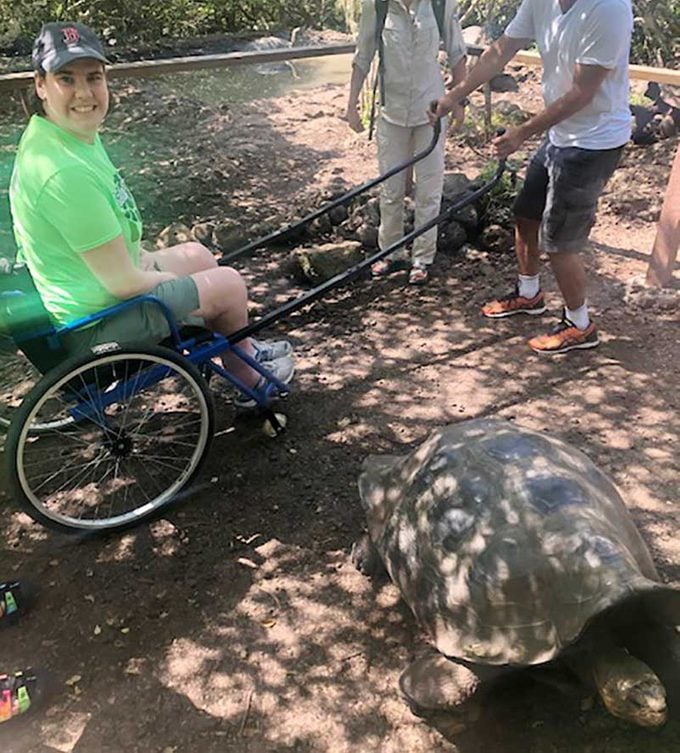
I have a disease called Charcot-Marie-Tooth, which affects the nerves in my arms and legs. It’s one of the most common inherited neurological diseases, affecting one out of every 2,500 people in the United States.
I use either crutches or a wheelchair to get around, but I haven’t let that stop me from visiting places like China, the United Kingdom, Ireland and Costa Rica. I even travel for work several times a year. Travel is such a great way to learn more about the world around us.
That said, traveling with a disability requires unique considerations. I have to make sure that the hotel offers accessibility features, including a no-step shower and handrails in the bathroom. Even going out to a restaurant can be challenging, especially when I encounter a place reachable only by climbing a set of stairs. In addition, the definition of accessibility can vary from country to country.
Before any trip, I do a lot of research to make sure the places I want to go will work for someone in a wheelchair. Certain locations lend themselves to accessible travel more than others. The Galápagos Islands isn’t one of those places, which is why I was thrilled to find a tour group tailor-made for people like me. The whole experience taught me so much about accessible travel.
The right equipment is key
Although my wheelchair does pretty well on a variety of surfaces, it wasn’t going to cut it when it came to sandy beaches. Luckily, my tour guide had a wheelchair specially designed for tough terrain.
The all-terrain wheelchair had two wheels instead of four and was pulled by two long handles in the front. This made it easier to go off-roading—and even into the water! Once the wheelchair was in the ocean, I was able to float right off of it and enjoy the surf.
On the first day of our trip, we ventured to a beach located on San Cristóbal Island called La Loberia. There, we were able to get up close to sea lions and lava lizards and could snorkel in the water. The beach is quite a rocky, sandy trek from the main town on San Cristóbal Island, and I know I never would have gotten the opportunity to enjoy watching the sea lions play and sunbathe without the use of the special wheelchair.
Another day, we visited a breeding center for giant Galápagos tortoises. We learned more about the prehistoric-looking creatures and efforts to protect them from habitat destruction and becoming prey to non-native species. The center had special incubators set up for baby hatchlings, but if we wanted to see the adults in the wild, we had to take a hike.
I’ve been fascinated by turtles ever since I was a young girl, so seeing the giant tortoises in their natural setting was at the top of my must-do list. Thanks to the adapted wheelchair and a strong helper, I got to travel the entire length of the hiking trail and check another item off my bucket list.
It’s OK to acknowledge your limits
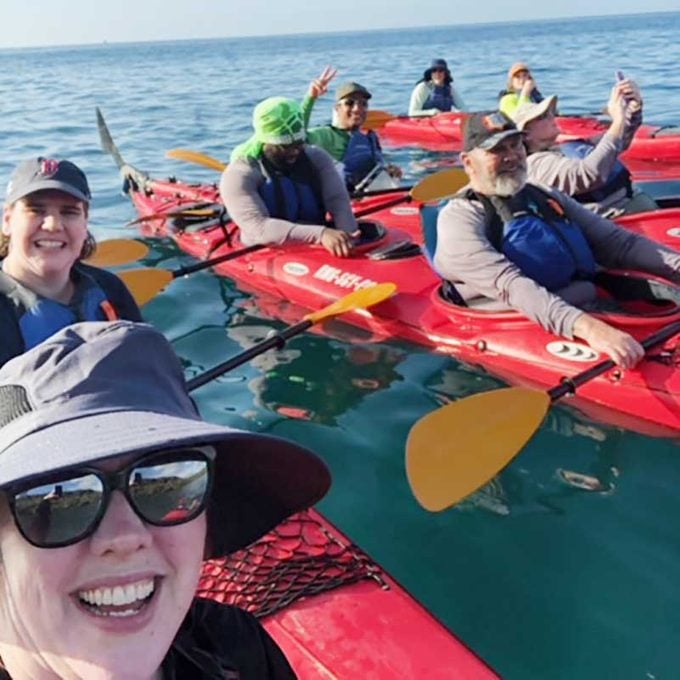
I freely admit that I’m not good at accepting my limits. I’d much rather push myself to exhaustion than ask for help or admit I can’t do something. In part, this explains why I’ve gotten so far in life. I prefer to challenge expectations. At the same time, it’s not always the healthiest habit, and I’ve definitely made myself sick as a result.
That’s why I was proud of myself when I elected not to snorkel during our boat trip to Kicker Rock. The eroded cone of an extinct volcano towers 500 feet over the Pacific Ocean, and the rock formation is one of the most famous snorkeling hot spots in the Galápagos Islands. There, visitors can see sharks—both hammerheads and Galápagos sharks—manta rays and sea turtles.
My wheelchair was loaded onto the boat, and I briefly got into the water to snorkel near one of the sea turtles—I would have regretted it if I didn’t. After that, though, I elected to stay behind. Was I sad to be away from the rest of my family? A little. But as I sat on the boat admiring Kicker Rock, I was also proud that I’d taken care of myself by acknowledging that I needed a break.
As an added plus, listening to my body left me with the energy I needed to kayak with my family (and loudly sing a song from Moana) around San Cristóbal Island the next day.
Accessible tour groups are a major asset
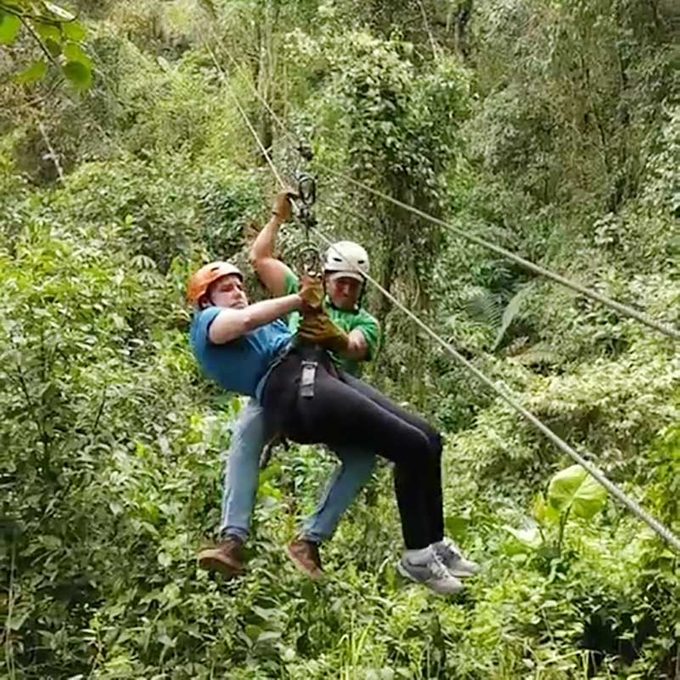
Booking an accessible travel guide with Latin America for All saved me time and worry. Instead of spending hours researching the Galápagos Islands and double—and even triple—checking the accessibility of each of my intended activities, restaurants, transportation methods and hotels, I got to sit back, relax and enjoy my dream of a trip.
Traveling with an accessible tour company has other benefits as well. My family and I wanted to go zip-lining before we left. We’d been lucky enough to go wheelchair zip-lining on a previous trip, and I wanted to replicate the high of soaring across the treetops.
This was a request my tour guide had gotten before, so he was able to make it happen for us. Previously, my wheelchair and I were both clipped to the line. In Ecuador, my experience was different. My wheelchair was clipped to the line separately, while I zip-lined with a guide. As a bonus, my 9-year-old nephew was finally old enough to join us.
Accessibility for all
Accessible tourism is not just for people with disabilities, although disabled travelers spend $58.2 billion a year on travel and go on leisure trips at the same frequency as those without mobility issues, according to a 2022 report from MMGY Global. It could also benefit seniors or those with young children—anyone who needs a little extra help during a trip.
As I like to say, accessibility benefits everyone. That’s as true for Galápagos vacations as it is for disability-friendly airlines and resorts that cater to people with disabilities.
And I can’t wait for my next adventure.
Source:
- MMGY Global: “Portrait of Travelers with Disabilities: Mobility & Accessibility”


